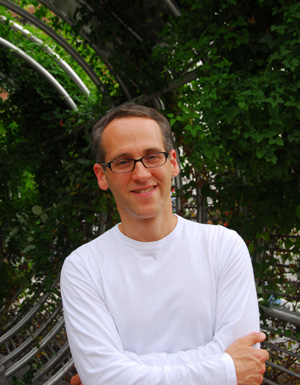Long before we had Global Positioning System gadgets to navigate through unfamiliar towns, humans had evolved their own natural ability to find their way and move through the world. Psychology Professor Michael Kahana and colleagues have now identified a unique type of brain cell that gives us a sense of direction, telling us whether we’re moving clockwise or counter-clockwise.
Scientists had long known that the brain’s hippocampus and entorhinal cortex (EC) were key to our perceptions of where we are and how we move through the three dimensions of our physical environment. But how those regions functioned to create a spatial picture inside the brain was still unclear. By enlisting neurosurgical patients with implanted brain electrodes to play a simple video game, Kahana and his colleagues were able to observe in real time the brain activity that occurs when people are finding their way through space.
Playing the “Yellow Cab” game with a joystick, patients maneuvered a taxi to random destinations through a virtual town with streets laid out in a circular path. Meanwhile, scientists monitored and recorded neuronal firing at more than 1400 points in the brain. This showed that certain cells in the EC, dubbed “path cells,” would activate when the patient was “driving” in one direction (e.g., clockwise through the town) and then shut down when the patient moved the taxi in the opposite direction. The path cells then pass along this information to “place cells” in the hippocampus to build a moment-by-moment, continually updated picture of location and movement.
"It all adds up to a dynamic, versatile, built-in sense of place and direction that keeps us on course, whether we’re driving to work, walking to the park or just trying to get to the bathroom in the middle of the night." - Michael Kahana
“Our discovery of EC path cells provides a striking demonstration of the broad range of information that may be encoded in [the entorhinal cortex],” note Kahana and his collaborators in their paper, published last month in the Proceedings of the Natural Academy of Sciences. While the hippocampal place cells primarily serve to remember location, with particular cells activating only when a person is at a certain place, the EC path cells work continuously to remember and encode the direction of movement. Working together, the path cells and place cells can help a person remember specific landmarks that they passed while moving in one direction but not in another.
It all adds up to a dynamic, versatile, built-in sense of place and direction that keeps us on course, whether we’re driving to work, walking to the park or just trying to get to the bathroom in the middle of the night. Kahana, who studies human memory and its neural mechanisms, plans to continue research on EC path cells to better characterize how they work to help us find our way through the dark.



